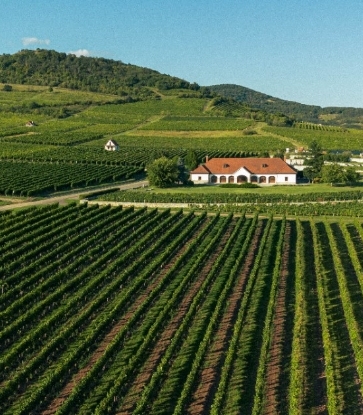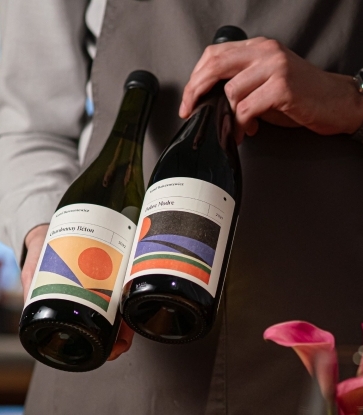I’ve had it way too good for the last few years when it comes to that thing that seals the bottle. As a Robert Parker Wine Advocate reviewer previously only covering the wines of Australia and New Zealand, I’ve recently come to appreciate the cork trials and tribulations that my colleagues must endure. Most wines bottled in my regions are now bottled under screw cap. Apart from the fact that it is so much easier and quicker to prep for large tastings when you don’t have to pull corks, I’ve not had to deal with too many incidences of cork taint while reviewing wines. Alas, my taint-free heydays all changed last month when Sonoma County was added to my regions of responsibility. I hasten to add—this is in no way a reflection on the quality of Sonoma wines, which is generally, in the context of the world of wine, very high. But it was a reality check for me, because here I was under the impression that cork manufacturers were making some headway in the battle against cork taint. I’ve been hearing about methods involving the steam distillation of corks to help eradicate taint and the use of gas chromatography to detect bad corks before they get to bottling lines. And yet, best efforts thus far do not seem to be enough. During a seven-day tasting of more than 900 Sonoma County wines last month, my helper and I had to discard around 7-8% of the wine samples because the wines were corked. This didn’t even include wines with other faults such as oxidation or volatile acidity, which accounted for another 1-2% of the wines. I can’t believe wine drinkers continue to put up with this level of spoilage.
Naturally produced from the renewable bark of oak trees (Quercus suber) grown mainly in Portugal and Spain, corks have for hundreds of years existed as an excellent closure for wine bottles. As a consumer, I have a deep-seated fondness for the use of natural cork. I love the history, look and feel of cork. Problem is, I cannot tolerate a wine that is corked; the smell and taste of cork taint renders the wine undrinkable for me. The fact that potentially one bottle of wine out of every dozen under cork is undrinkable is ludicrous.
What exactly is cork taint? A taint can be defined as an undesired character that is completely foreign to a beverage or food, normally coming from an exterior source. And indeed, cork taint does not arise or originate from grapes or winemaking. It is mostly caused by 2, 4, 6-trichloroanisole (or TCA for short), a chemical compound derived largely from the cork stopper in a wine bottle and to a lesser extent from other sources such as wood (oak barrels, roofs, floorboards, etc.) in a winery. There are a few other compounds responsible for “cork” taint, but this is the major one. TCA is generated by naturally-occurring fungi that often exist in the crevices of wood or cork, coming in contact with chlorine compounds, which are ubiquitously present in pesticides, cleaning/sterilizing/bleaching agents and wood treatments, etc. Chlorine is highly volatile; it disperses easily and far from its original source and it’s often difficult to keep offending fungi from coming in contact with chlorine. When the fungi meets the chlorine there’s an ungodly engendering that occurs, TCA is formed, and it is not pleasant, pernicious in its ability to instantly spoil a wide range of food and beverage items including mineral water, coffee and apple juice.
Even if minute concentrations of a few parts per trillion are instilled by TCA generating fungi within the cork into the wine that it touches, it can be detected by the human nose, imparting an unpleasant moldy/musty, damp cellar or wet cardboard character. In my experience, once a corked wine is exposed to air, the “corkiness” does not dissipate; it gets worse. Others claim the wine can recover slightly with air, although this is most likely an effect of becoming accustomed to the smell and/or the TCA odor fading into the background as other wine aromas emerge. At levels below the detection threshold, TCA can still insidiously damage the wine, muting or otherwise dulling the expression of aromas and flavors in a wine without actually giving the game away that it is corked. This non-detectable TCA situation makes me wary of Amorim’s—the biggest cork manufacturer in the world—recently revealed NDtech cork guarantee, claiming that they are now able to screen corks using gas chromatography and guarantee that they are at least below the detection level if not entirely TCA free. So, forgive me for not shouting, “Woo-hoo!,” just yet.

It is estimated by various sources—everyone from cork manufacturers to the screw cap folks and a whole crowd of agendas in between—that anywhere between 1-7% of all wines bottled under cork are “corked” to some extent. So, pick a figure somewhere in the middle and that’s about how likely you are to get a bad bottle.
One other important TCA fact is that individuals vary significantly in their ability to detect the compound; some are very sensitive to it while others hardly notice it all. Plus, it does take a bit a familiarization to be able to identify the smell. Another issue that can impede the identification of a corked bottle is that wines can be just a little corked or very corked—it really depends on how much of the compound is present in the wine and the style of the wine. For example, even the tiniest concentrations will stand out like a sore thumb in a Champagne while the same amount may be hardly detectable in a big, robust Châteauneuf-du-Pape red.
To date, there is no viable cure for a corked bottle of wine and the only “quality” solution, if you ask me, is to throw the offending bottle away and open another. Unless it’s irreplaceable—TCA has no heart for special or expensive corks/bottles and makes no exceptions.
When I complained about my disappointing experience with corks during my Sonoma tastings, one of my wine expert colleagues begged to differ with my stance that the taint rate is not getting better, proffering that rates of cork taint depend on region and/or cork quality level, which suggests that some regions and/or grades of cork receive more stringent checks by the manufacturers than others. Although there is no evidence corroborating this, the thought just makes me downright angry. I understand that there are different grades of cork (longer and sleeker corks with less “imperfections” are more expensive), but shouldn’t all cork buyers be able to expect the same level of failure rates? More to the point, how would the consumer know, because to most wine drinkers, a cork is just a cork.
New Zealand and Australia are a little unusual in their near total rejection of using natural cork to seal wine bottles. Collectors of wines from these countries will likely note that Antipodean wines from the 1990s and early 2000s seem to have significantly higher incidences of cork taint than wines from some other countries closer to the source of cork production. I say “seem to” because no studies have been carried out to support this theory. Yet the anecdotal evidence was black and white enough for the New Zealand- and Australia-based wineries that got fed up with the unacceptably high incidences of cork taint that they were experiencing. What started in Clare Valley, Australia in 2000 as a defiant stance against cork taint spread to a movement in New Zealand in 2001 and screw caps became the norm throughout both countries by around 2004 and 2005. The Aussie-Kiwi message to the big European cork manufacturers was as clear as that of the 1984 Twisted Sister song, “We’re not gonna take it anymore!”
Like the rest of the wine world, the vast majority of USA wineries still bottle under cork. This is mainly due to domestic consumer preference/acceptance, or so I’m told. Whenever I ask local Northern California producers why they put up with cork, I’m regularly informed that a lot of USA wine drinkers turn their noses up to screw caps, equating their use with cheap booze.
So, having resigned myself to the way things are here, I did a double take when Sonoma-based Siduri Winery’s winemaker—Adam Lee—rocked-up to my office a few days ago, with his full line-up of wines under screw cap. “We switched over to screw caps with the 2011 vintage on all of the wines,” Adam told me. “We actually went to screw caps on all of the Appellation wines in 2008. Prior to that, we started experimenting with screw caps in 2004 and did side-by-side trials all along since that time.” Intrigued, I asked him why he went over to screw caps. “I first made the change honestly because I thought that the number of corked bottles was out of hand. It's about 4 percent now, but it was closer to 8 percent at the time.” And as for the reaction of his customers? “We've had a more positive response to screw caps than I ever imagined,” he replied. “Restaurants have especially loved them.”
Ask the Experts: What Is Biodynamic Wine?
Screw caps have without doubt offered salvation to TCA-tired winemakers and consumers, but they are not without a few drawbacks (apart from consumer perception, real or perceived). Firstly, it can take time for a winemaker to understand how to adjust pre-bottling preparations for screw cap, for their wines. Because screw caps are generally a more hermetic seal than cork, bottling with the same “free” sulfur dioxide (an antioxidant added to wine prior to bottling to offer protection from oxidation) level as a wine under cork may contribute the manifestation of rubbery “reduction” characters in the wine. And this was a common flaw in the early days of bottling wines under screw cap. But I’ve seen very few Australian or New Zealand screw cap wines suffering from reduction in recent years. Part of the reason is because many winemakers using screw caps have also begun to routinely use copper fining (copper sulfate additions to strip out reduction compounds such as hydrogen sulfide) as a technique to get rid of reduction precursors before the wine is bottled. While chemical ameliorations are never ideal—and have spurred some alarmists into cautioning about the rising levels of copper residue in wines under screw cap—this little trick seems to have done the trick when it comes to getting rid of that occasional rubbery stink.
The other major complaint about screw caps is the rate at which wines age under them. In truth, I have no idea what that rate is…we wine experts are all kind of wait-and-see about this issue. Side-by-side trials seem to indicate that wines under screw cap do develop and evolve, yet they are generally developing slower and, well, differently than the same wines under cork. Mind you, at least a bottle under screw cap will evolve more or less precisely the same as bottles of the same wine if kept under the same conditions (e.g. in the same case), which is more than can be said for bottles under cork. Because each and every cork is a little different in its natural imperfections (e.g. crevices in the cork), over years/many years, these minor differences in corks can equate to major differences in how a bottle ages compared even to other bottles in the same case. In some wine styles that can be particularly prone to oxidation, such as Hunter Valley Semillon or Clare Valley Riesling, the differences in levels of oxygen ingress in wines under corks—before the near total migration of these regions over to screw cap—were stark; too many of these wines were oxidizing before their time. Many producers of these wines may have initially gone over to cork because of the cork taint issue, but with the benefit of hindsight it does appear that many of these wines do age better under screw cap. I’d say the jury is still out though, when it comes to reds with solid tannin and acid structures (e.g. Cabernet Sauvignon and Shiraz). Personally, for these wine styles, because I generally like the way they age under cork, differing aging rates is something I can live with, but not cork taint.
What a strange industry we must appear to makers of other food and beverage sorts. We winos mostly continue to shrug our shoulders at common, regularly occurring incidences of a spoilage taint that can destroy even our rarest and most expensive of wine treasures. But for how much longer? This is our history, this is our tradition, but this does not have to be our future. I believe screw caps, apart from garnering hallelujahs from service folks and wine critics for their ease of use, are doing a bang-up patch-job for this massive wine industry cork taint problem. And I can see the screw cap science continually being refined and consumer confidence in them growing. Meanwhile it appears, given my recent experience with the Sonoma tastings, it’s the old buyer beware business as usual for the vast majority of wines under cork. I like having closure choices. I feel there is a place for both screw caps and corks. So, I beseech the cork manufacturers to get their acts together and just sort this cork taint issue out—for all corks—before winemakers and consumers have no alternative but to relegate corks to exist solely as nostalgic museum curios.




















